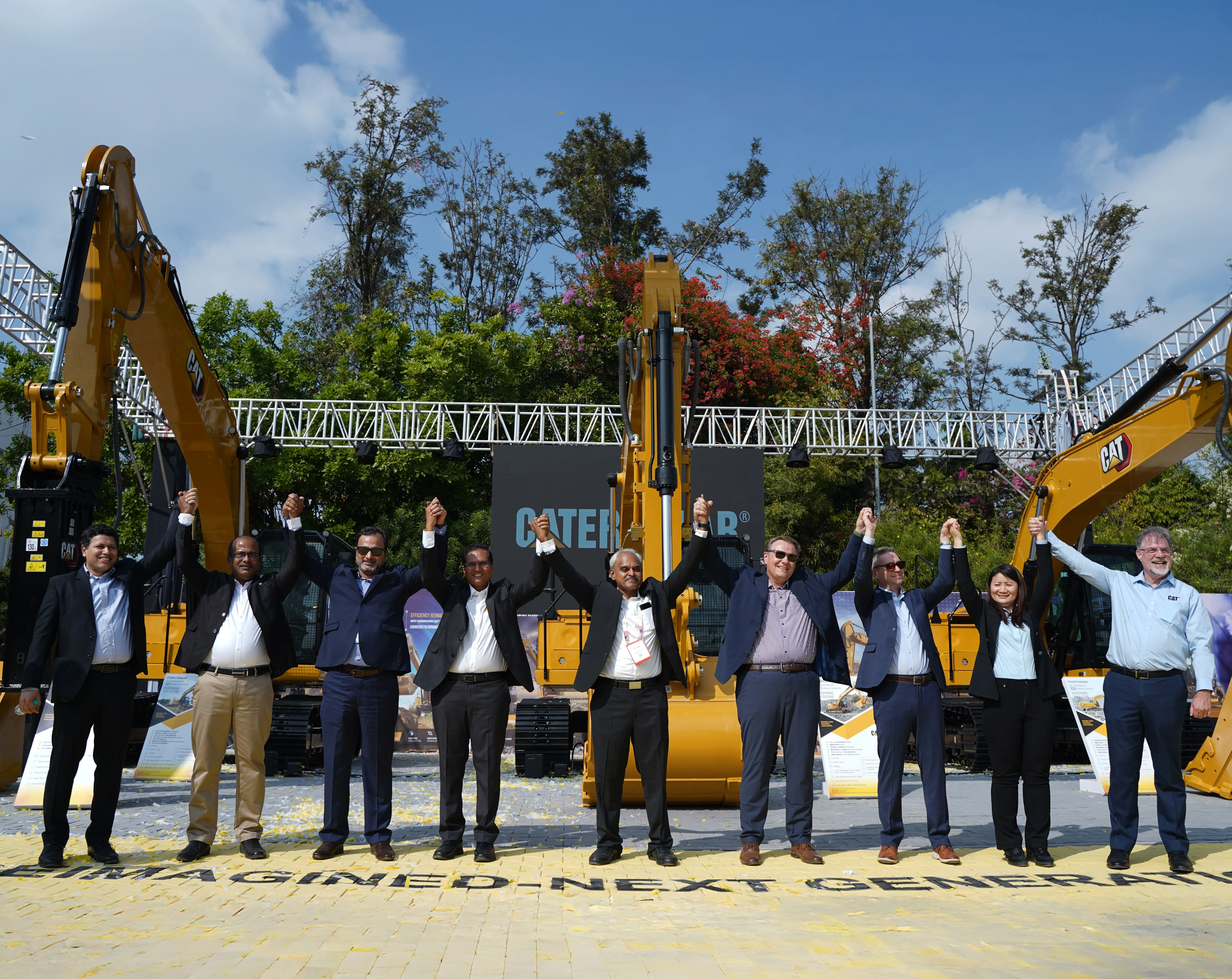- Tarun Kumar Khulbe, Whole Time Director, Jindal Stainless Tarun Kumar Khulbe’s directorial portfolio at Jindal Stainless since May 2018 has spanned sales and marketing, IT, logistics, strategic initiatives and subsidiaries – areas the industry veteran is well versed in as a result of his exposure at Jindal Stainless and, previously, Raymond Steel, which later merged into ThyssenKrupp, Germany. Under his watchful eye, Jindal Stainless has been recording consistent growth; sales by volume grew 7 per cent in FY19-20 to 915,900 million tonne (mt) while production increased to 973,995 mt, 10 per cent higher than the previous year. Even during the pandemic, Jindal Stainless logged slightly higher profit before tax for the nine months ending on December 31, 2020, than the same period the previous year! Drawing on his hands-on knowledge and experience of people, plants, projects and the management of business units in India and Germany, Khulbe has played a key role in steering Jindal Stainless towards sustained operational excellence through very delicate times. In conversation with CW, he elucidates the prospects for stainless steel and voices his concerns for the Indian industry, the world’s second largest producer of steel, in light of the Government’s recent policy decisions. India became the second largest producer of steel in the world in 2018. Is the growth of stainless steel likely to outpace traditional steel?As an excellent engineering material, stainless steel provides sustainable solutions across diverse applications, such as automobiles and public transport, buildings and construction, process industries, food processing, nuclear and defence applications, etc. Along with being ~100 per cent recyclable, it also offers excellent corrosion resistance, a low lifecycle cost, high strength-to-weight ratio, durability, aesthetics and negligible maintenance requirement. For these reasons, we expect high demand for stainless steel in the coming years.Globally, demand for stainless steel has grown more than demand for all of its peers, the major metals, ferrous and non-ferrous. Stainless steel recorded a CAGR of 5.33 per cent between 1980 and 2019, thus outpacing carbon steel (CAGR 2.49 per cent) by far, according to the International Stainless Steel Forum. India’s overall stainless steel demand in 2019 was ~3.9 mt. Demand for stainless steel in India is growing at a CAGR of 8-9 per cent, according to the Indian Stainless Steel Development Association. India’s lower per-capita consumption of stainless steel, ~2.5 kg against the world average of ~6 kg, highlights an immense untapped potential for stainless steel usage in India.In what areas do you anticipate the most growth, and why?Stainless steel saw a temporary disruption, much like other core industries, in CY2020 owing to COVID-induced lockdowns. After the peak pandemic period, demand for stainless steel recovered better than expected owing to the government’s timely economic stimulus and increased focus on in-house manufacturing. We are optimistic about demand for stainless steel recovering to pre-COVID levels in CY2021 provided trade is not disrupted further because of any unexpected associated complication.Stainless steel demand is triggered by public and private spending on infrastructure, favourable policies supporting sustainable infrastructure development, and an impetus that enables growth for the domestic MSME sector. Collectively, this builds a resilient ecosystem for robust stainless steel consumption. Stainless steel capacities in India are capable of turning the country into a global hub for the production and consumption of stainless steel. The industry is making sustained efforts to expand beyond the traditional applications of stainless steel in the country to increase the per-capita consumption from 2.5 kg. Most stainless steel demand in India comes from kitchen goods and white goods (~40 per cent of demand); architecture, building and construction; automobiles, railway and transport; and process industries. The Indian Railways drives a significant share of the national demand for stainless steel. Stainless steel wagons and coaches, allied rail infrastructure like foot over-bridges, proposed station modernisation and dedicated freight corridors are likely to sustain the demand for stainless steel.Increasing awareness of long-term sustainable solutions for infrastructure and construction and basing procurement decisions on the lifecycle cost are expected to boost demand for stainless steel. Proposed investments in public infrastructure are further bound to propel demand. Metro-rail projects continue to be a rapidly growing domain. Last year’s experience testifies that medical and health infrastructure is expected to boost demand for stainless steel as a safe, hygienic and inert metal. Jindal Stainless posted operational profits in Q2 and Q3. Is it safe to say that you are seeing pre-COVID demand levels? Has the impact of COVID-19 ended for you?The stainless steel industry witnessed contraction in the beginning of FY21. However, domestic demand charted a ‘V-shaped’ recovery curve from July 2020 onwards. This bolstered our sales volume to 250,562 tonne in Q3FY21, 5 per cent higher year on year. The third quarter witnessed healthy revival in end-user segments like automotive, pipes and tubes, and industrial fabrication. Based on improved GDP growth, we expect further improvement in the domestic consumption of stainless steel and the same level of growth in CY2021. Domestic consumption accounted for 85 per cent of sales. However, ambiguity in the business environment owing to the ongoing pandemic makes it premature to set a number to this expectation.High commodity prices for finished stainless steel goods may impact demand in the long run. However, it is pertinent to note that in an open market economy, the prices of finished products are in consonance with the prices of raw materials. During the July-December 2020 period, the prices of major raw materials required for producing stainless steel increased substantially globally. Nickel prices surged by ~40 per cent, molybdenum prices increased by ~27 per cent, while copper and ferrous scrap grew by nearly 24 per cent and 45 per cent respectively. India’s reliance on imports of these raw materials means the pricing of stainless steel finished products is directly linked with these highly priced inputs. Thus, it would be unreasonable to set a higher target than FY19-20 for the current fiscal.What could turn the scenario around for domestic players is the temporary suspension and revoking of existing countervailing duties on China and Indonesia, respectively, announced in the FY2021-22 Union Budget. This will allow foreign firms to easily dump subsidised stainless steel finished goods in the Indian market. This move will hurt the domestic industry, which is only just recovering from COVID-induced disruptions. Not only will organised players be hit severely, thousands of already stressed MSME manufacturers (which cater to over 35 per cent of the domestic stainless steel market) will turn into traders. Large producers will be forced to put their investment plans on hold. Some MSME players will be compelled to shut shop, thus defeating the ‘Make in India’ vision. It will also hurt employment generation in the country. Worse, it will cause foreign stainless steel producers to benefit from the government’s enhanced spending on infrastructure, further damaging the interests of domestic players. Overall, the industry’s capacity utilisation still hovers at around 60 per cent. We have initiated talks with the government to review its decision and reinstate trade remedial measures implemented after a comprehensive investigation by the Directorate General of Trade Remedies.How have you innovated and expanded your product basket to cater to customers in auto, railway and other segments? What marketing strategies and partnerships have you set in place?We gauged a huge potential for stainless steel in the auto segment and took up a detailed market study along with our OEM customers. Consequentially, with our in-house R&D, we began indigenising certain auto grades along with our partners, and were successful in developing stainless steel grades that were earlier imported by the auto industry. Today, we are proud partners of a few major auto OEM companies who are locally sourcing stainless steel from Jindal Stainless. Grades like 436, 439, and 441, which are required for BS6-compliant exhaust systems, are now easily available in the domestic market.The Railways has been one of our major customers for over a decade now. Our partnership is not limited to the supply of raw materials but includes assisting them to modernise their infrastructure by means of stainless steel fabrication and upgrading their standardisation code. Moreover, beyond rolling stock, we have been able to develop alternatives to carbon steel for allied railway infrastructure like foot over-bridges and railway bridges. We will soon be seeing India’s first stainless steel foot over-bridge in Bhayandar, Mumbai. This stainless steel model is likely to be replicated across the western region as it is a highly corrosive zone because of its proximity to the sea. Beyond providing RDSO-certified raw material to the Railways, we regularly organise workshops to guide their workforce on various aspects of handling stainless steel. At present, Jindal Stainless has all the expertise, capacity, and raw materials to fulfil the demand of the Indian Railways.Tier 2 and Tier 3 cities are enhancing their consumption of stainless steel much faster. What is the reason for this phenomenon? Smaller cities are India’s current and future growth drivers. In the natural course of development, these cities draw inspiration from metros in all respects, including infrastructure development. Given the gap between the current and potential consumption of stainless steel in Tier 2 and 3 cities, the growth rate of stainless steel is bound to be high. The metal can be easily adopted for public infrastructure projects, such as bus queue shelters, railway stations, public toilets, poles and signage boards. It is also an upcoming and preferred choice of metal for home and other architectural applications. The pace of general development in small cities is greater than that of metros, which naturally turns them into demand centres. In July 2019, Jindal Stainless launched the ‘Jindal Saathi’ cobranding programme for the decorative stainless steel pipe and tube sector (P&T), with around 100 MoU partners to guard the domestic market from counterfeit products and ensure supply of the right quality product to end-customers. Seeing the roaring success of Phase 1 of the campaign, we have expanded the scope of the programme from 28 cities to over 270 cities and towns in Phase 2. These include metros and Tier 1 and 2 cities, which house major and minor P&T markets. - CHARU BAHRITo share your views, write in at feedback@ConstructionWorld.in





















